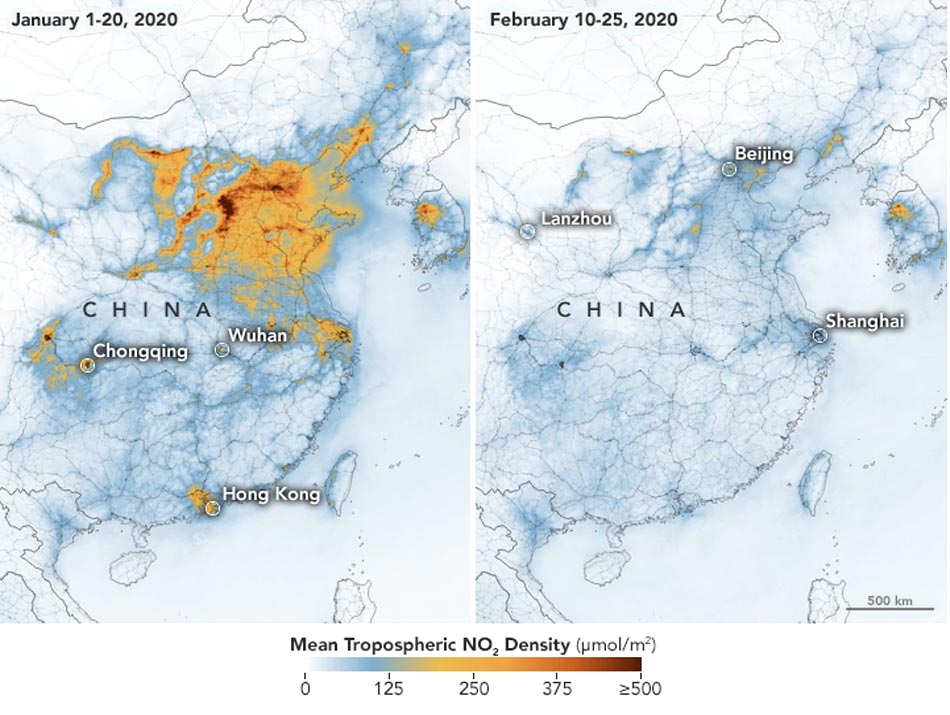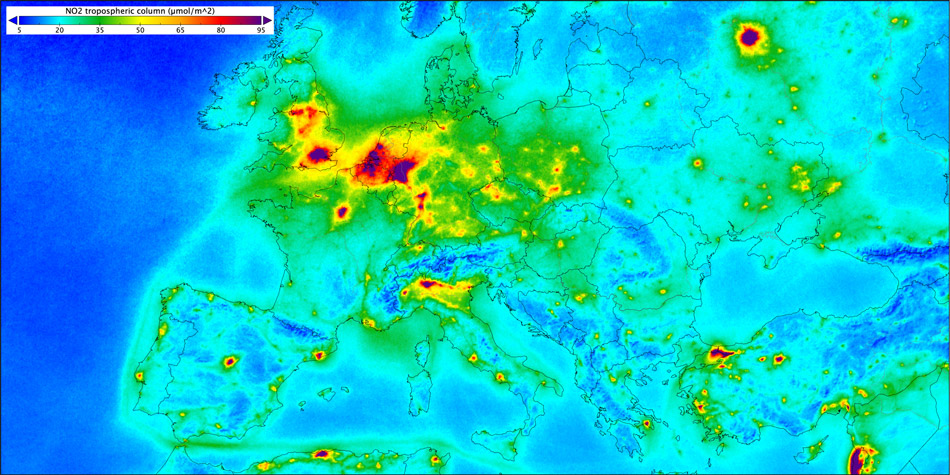We have recently reported how CO2 levels have started to rise again, due to the impact of drivers switching t to larger SUV’s. With the onset of Coronavirus, recent satellite images are showing that the levels of air pollutants and warming gases over some cities and regions are showing significant drops due to reduced travel.
Researchers in New York have shown that that Carbon monoxide (mainly from cars) has been reduced by nearly 50% compared with last year. Emissions of the planet-heating gas CO2 have also fallen sharply.
But there are warnings levels could rise rapidly after the pandemic. With global economic activity reducing as a result of the coronavirus pandemic, it is hardly surprising that emissions of a variety of gases related to energy and transport would be reduced. Scientists say that by May, when CO2 emissions are at their peak thanks to the decomposition of leaves, the levels recorded might be the lowest since the financial crisis over a decade ago.

While it is early days, data collected in New York this week suggests that instructions to curb unnecessary travel are having a significant impact.
Traffic levels in the city were estimated to be down 35% compared with a year ago. Emissions of carbon monoxide, mainly due to cars, have fallen by around 50% for a couple of days this week according to researchers at Columbia University.
They have also found that there was a 5-10% drop in CO2 over New York and a solid drop in methane as well.
Although there are a number of caveats to these findings, they echo the environmental impacts connected to the virus outbreaks in China and in Italy.
Analysis suggests there has been a 25% drop in energy use and emissions in China over a two week period. This is likely to lead to an overall fall of about 1% in China’s carbon emissions this year, experts believe.
Typical nitrogen dioxide levels across Europe are also likely to see falls, which is related to reduced car journeys and industrial activity. The gas is both a serious air pollutant and a powerful warming chemical. An remember, this is just in a matter of weeks.

With Italy being on lock down for more time that other EU cities, the video below shows the dramatic effect of reducing travel. The animation shows the fluctuation of nitrogen dioxide emissions across Europe from 1 January 2020 until 11 March 2020, using a 10-day moving average.
With aviation grinding to a halt and millions of people working from home, a range of emissions across many countries are likely following the same downward path. While people working from home will likely increase the use of home heating and electricity, the curbing of commuting and the general slowdown in economies will likely have an impact on overall emissions.
What’s likely to make a major difference to the scale of carbon emissions and air pollution is how governments decide to re-stimulate their economies once the pandemic eases. Back in the 2008-09, after the global financial crash, carbon emissions shot up by 5% as a result of stimulus spending that boosted fossil fuel use.
These are indeed challenging times at the moment. There is an opportunity to press the reset button and plan ahead. There is a clear picture that how we move has to be addressed going forward and how the impact of powertrain choice impacts global pollutant levels.



